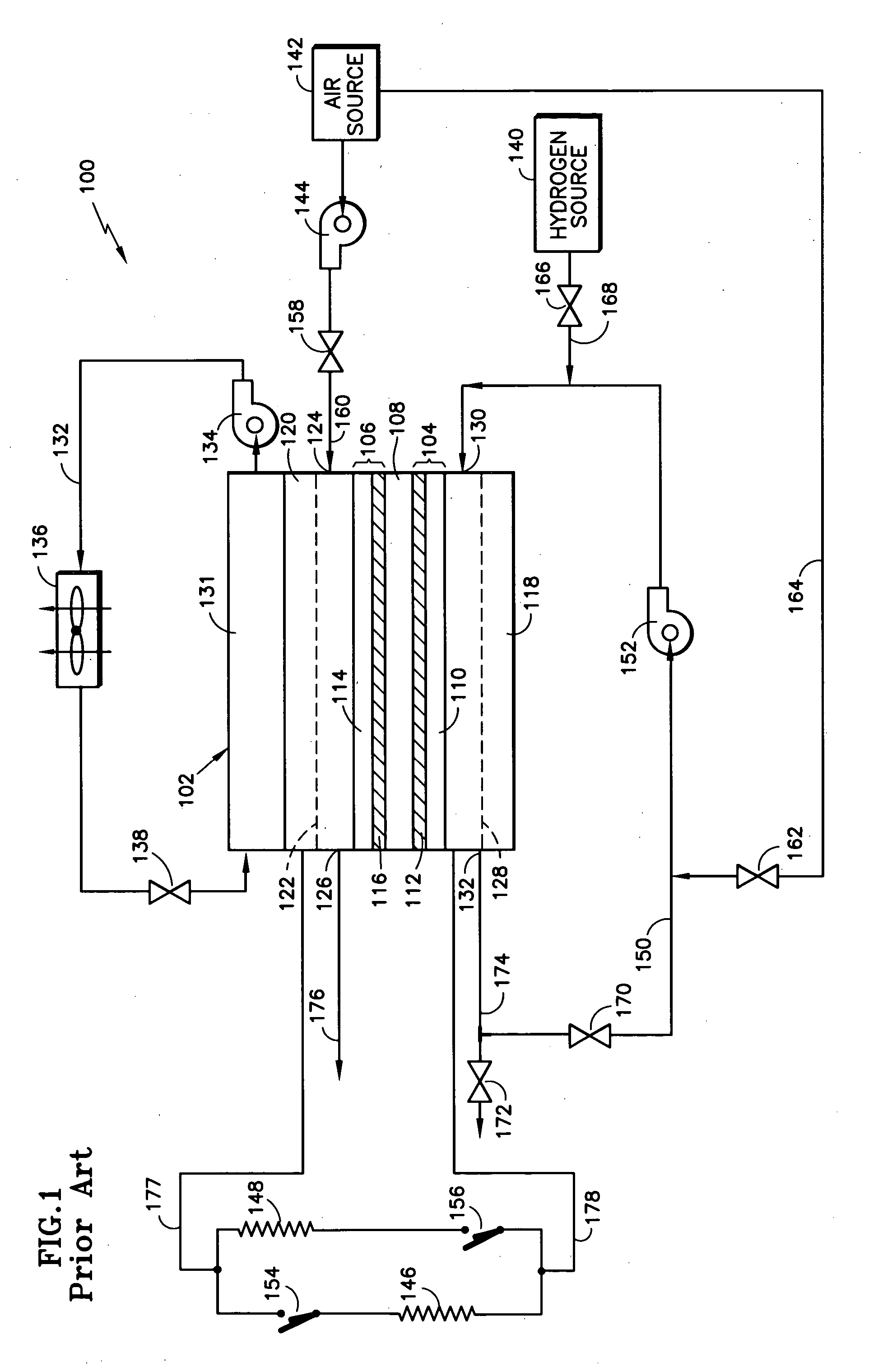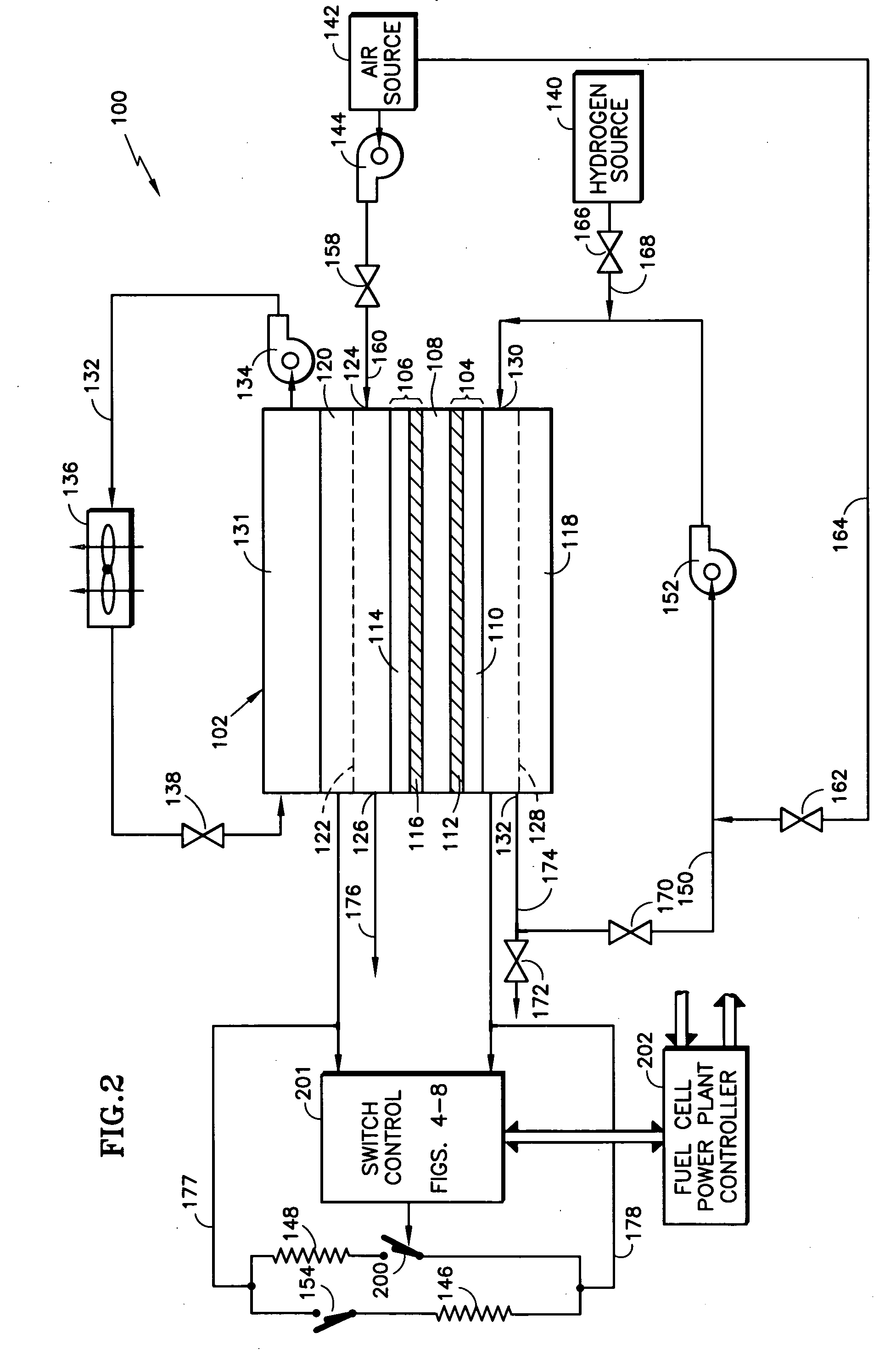Fuel cell voltage control
a fuel cell and voltage control technology, applied in the direction of electrical generators, emergency supply, sustainable buildings, etc., can solve the problems of fuel starvation, cost and packaging of voltage limiting use of two separate and distinct auxiliary loads during startup and shutdown, and avoid complex fuel inlet manifold designs, simple, low cost and more effective packaging
- Summary
- Abstract
- Description
- Claims
- Application Information
AI Technical Summary
Benefits of technology
Problems solved by technology
Method used
Image
Examples
Embodiment Construction
[0033] Referring to FIG. 2, in accordance with the invention, a switch 200 is operated cyclically during fuel cell stack startup and during fuel cell stack shutdown, in response, at least, to the stack voltage between the external circuits 177, 178. A switch control 201 can take a variety of configurations which are illustrated in FIGS. 4-8. Various functions, such as enabling startup and shutdown procedures, are controlled by a processor based controller 202.
[0034] A first configuration of the switch control 201 (as illustrated in FIG. 3) closes the switch 200 when the average voltage per cell in the stack reaches an upper limit 203, which may be on the order of 0.33 volts. The resultant current flow causes the voltage to decrease; and when the voltage decreases to a lower limit 204, which may be on the order of 0.13 volts, the switch 200 is once again opened.
[0035]FIG. 4 is a simplified illustration of comparators 205, 206 comparing the cell stack voltage on the line 177 with an...
PUM
 Login to View More
Login to View More Abstract
Description
Claims
Application Information
 Login to View More
Login to View More - R&D
- Intellectual Property
- Life Sciences
- Materials
- Tech Scout
- Unparalleled Data Quality
- Higher Quality Content
- 60% Fewer Hallucinations
Browse by: Latest US Patents, China's latest patents, Technical Efficacy Thesaurus, Application Domain, Technology Topic, Popular Technical Reports.
© 2025 PatSnap. All rights reserved.Legal|Privacy policy|Modern Slavery Act Transparency Statement|Sitemap|About US| Contact US: help@patsnap.com



